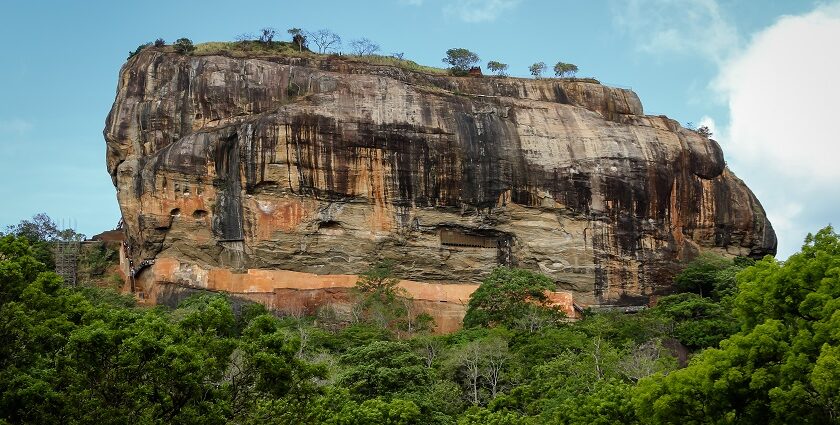When it comes to unravelling the incredible footprint of the island’s heritage, few experiences rival exploring the monuments in Sri Lanka. This stunning tropical country is dotted with awe-inspiring sites that speak volumes about its ancient kingdoms, colonial influences, and spiritual roots. From towering stupas to grand fortresses and carefully carved temples, these landmarks capture the essence of Sri Lanka’s past and present. Each monument offers a unique window into the cultural, religious, and architectural legacy of the island, inviting travellers to step back in time and discover stories etched in stone.
10 Historical Monuments In Sri Lanka
Here is a list of the most important monuments in Sri Lanka for a memorable visit.
1. Sigiriya Rock Fortress (Sigiriya)
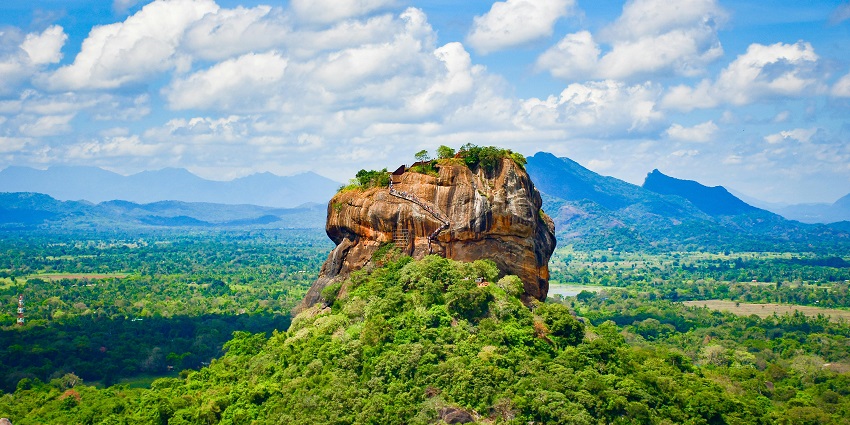
Photo: Harsha Samaranayake / Pexels
Often hailed as the “Eighth Wonder of the World”, Sigiriya is a marvel of ancient urban planning and artistry. Rising 200 metres above the surrounding plains, this massive rock is home to frescoes, water gardens, and the famous Mirror Wall. Built in the 5th century by King Kasyapa, Sigiriya served both as a palace and a fortress. Its engineering brilliance and breathtaking views make it one of the most iconic and important monuments in Sri Lanka, drawing history buffs and nature lovers alike.
Location: Sigiriya, Matale District, Central Province, Sri Lanka
Timings: 7 AM – 5:30 PM
Nearest Airport: Sigiriya Airport (GIU) – 6 km
Suggested Read: Things To Do In Sigiriya In Sri Lanka
2. Temple Of The Tooth (Sri Dalada Maligawa, Kandy)
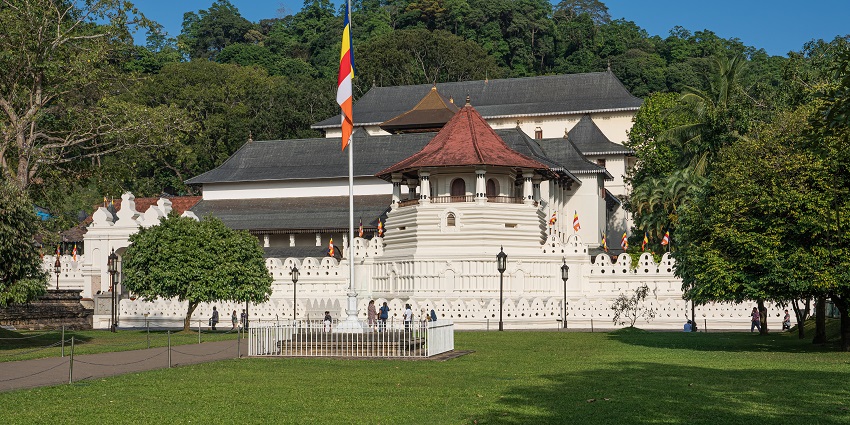
Photo: A Savin / Wikimedia Commons
Located in the scenic city of Kandy, the Temple of the Tooth houses one of the most sacred relics in Buddhism, the tooth of the Buddha. This revered site plays a central role in the cultural and spiritual life of the country. The temple complex is known for its rich Kandyan architecture, daily rituals, and the annual Esala Perahera festival. It stands as a powerful symbol of faith, making it one of the most significant historical monuments in Sri Lanka for religious pilgrims.
Location: Sri Dalada Veediya, Kandy, Central Province, Sri Lanka
Timings: 5:30 AM – 8 PM
Nearest Airport: Bandaranaike International Airport (CMB) – 104 km
3. Dambulla Cave Temple (Dambulla)
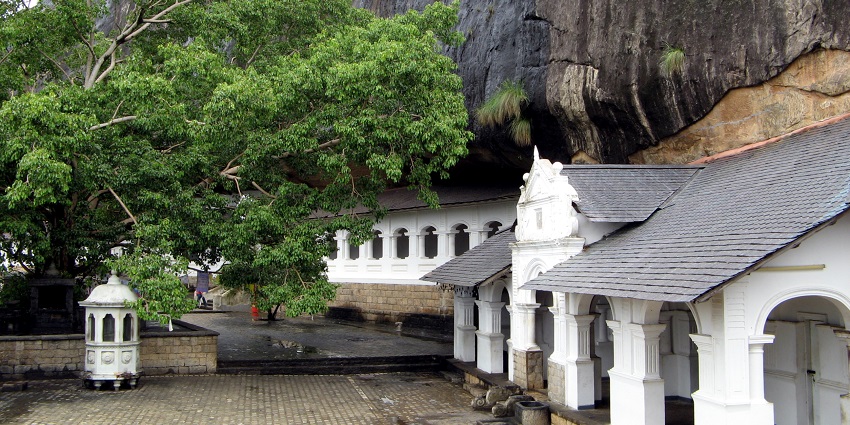
Photo: Michael Gunther / Wikimedia Commons
A UNESCO World Heritage Site, the Dambulla Cave Temple is a marvel carved into a massive rock over 160 metres high. Consisting of five caves, this sacred site features more than 150 statues of the Buddha and detailed murals dating back over 2,000 years. The cave ceilings are covered in beautiful frescoes that narrate stories from Buddhist mythology. The temple has served as a place of worship and meditation since ancient times, making it one of the most mesmerising spiritual monuments in Sri Lanka.
Location: Kandy-Jaffna Highway, Dambulla, Central Province, Sri Lanka
Timings: 7 AM – 7 PM
Nearest Airport: Sigiriya Airport (GIU) – 12.8 km
Suggested Read: Things To Do In Dambulla And Around On Your Trip To Sri Lanka
4. Anuradhapura Ancient City (Anuradhapura)
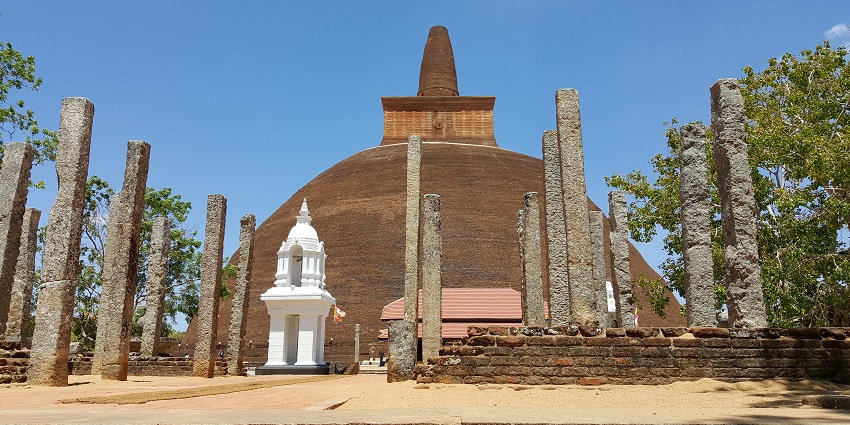
Photo: Nicolas Chadeville / Wikimedia Commons
As one of the oldest continuously inhabited cities in the world, Anuradhapura is the cradle of ancient Sinhalese civilisation. It was the capital of Sri Lanka for over a thousand years and is home to enormous stupas, monastic complexes, and the sacred Sri Maha Bodhi tree. Visitors can explore architectural masterpieces like Ruwanwelisaya and Thuparamaya. This ancient city paints a vivid picture of a bygone era and is undoubtedly one of the most impressive historical monuments in Sri Lanka.
Location: Anuradhapura, North Central Province, Sri Lanka
Timings: 7 AM – 7 PM
Nearest Airport: Bandaranaike International Airport (CMB) – 128 km
5. Polonnaruwa Ancient City (Polonnaruwa)
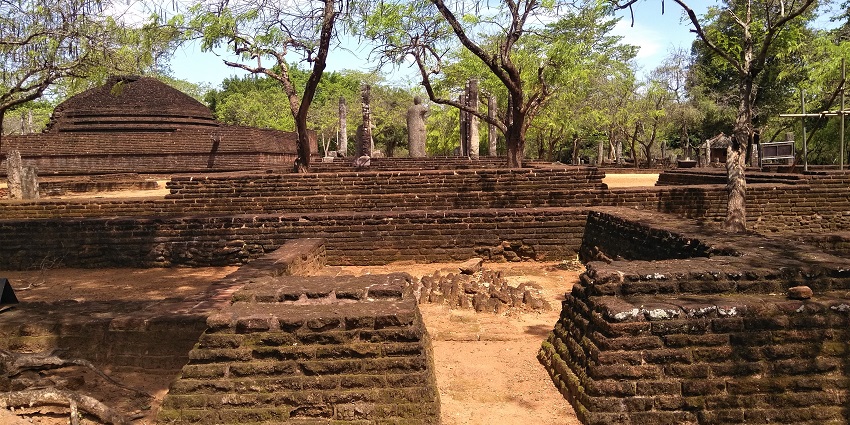
Photo: Nahid Sultan / Wikimedia Commons
Polonnaruwa, a UNESCO World Heritage Site, is a beautifully preserved medieval city that served as the royal capital in the 11th and 12th centuries. It has an array of Buddhist temples, royal palaces, and statues, including the famous Gal Viharaya stone Buddhas. The city reflects a harmonious blend of religious and secular life, highlighting the zenith of Sinhalese culture. As one of the important monuments in Sri Lanka, it offers a compelling look at the island’s rich architectural heritage.
Location: Polonnaruwa, North Central Province, Sri Lanka
Timings: 7 AM – 5:30 PM
Nearest Airport: Sigiriya Airport (GIU) – 60 km
Suggested Read: Things To Do In Sri Lanka For Your Next Getaway
6. Galle Fort (Galle)
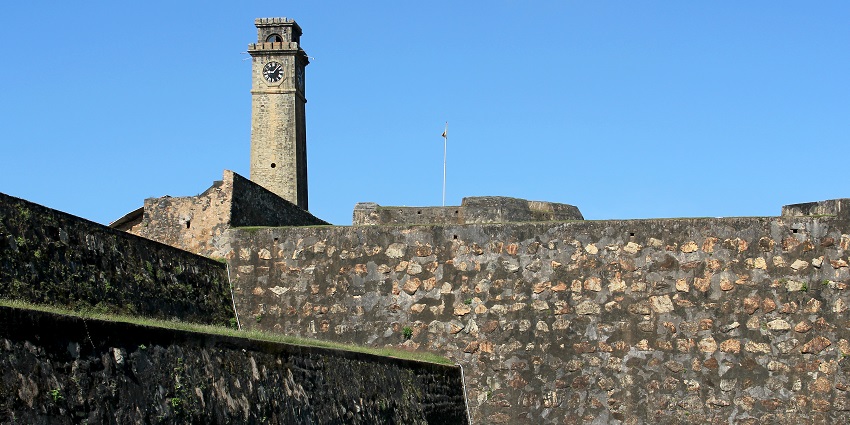
Photo: Sylvia Berger / Wikimedia Commons
Constructed by the Portuguese in the 16th century and later fortified by the Dutch, Galle Fort is a captivating blend of European architecture and South Asian traditions. Situated on the southwest coast, this fortified city boasts cobbled streets, colonial-era buildings, museums, and charming boutiques. The fort is a UNESCO World Heritage Site and remains a living monument, still inhabited and thriving. Galle Fort stands as a testament to colonial history and maritime trade, making it one of the must-visit monuments in Sri Lanka.
Location: Galle, Southern Province, Sri Lanka
Nearest Airport: Koggala Airport (KCT) – 16 km
7. Jetavanaramaya Stupa (Anuradhapura)
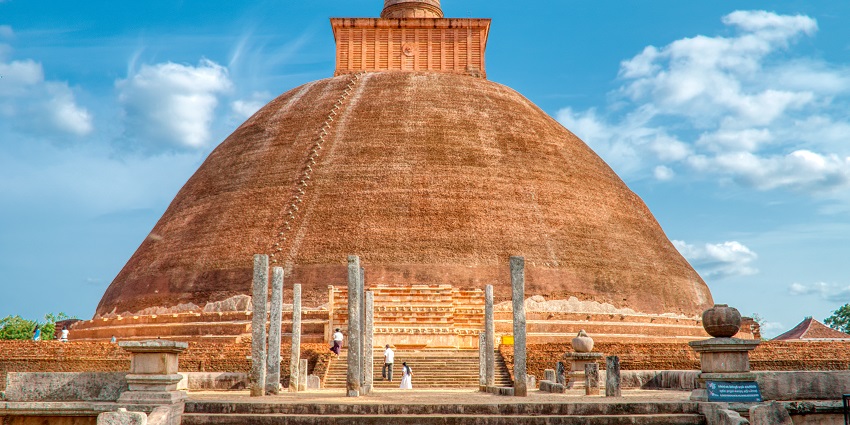
Photo: Wimukthi Bandara / Wikimedia Commons
Jetavanaramaya is a colossal brick stupa located in Anuradhapura, once considered the tallest structure in the ancient world after the Egyptian pyramids. Built by King Mahasena in the 3rd century AD, the stupa rises to over 120 metres and is made up of over 90 million bricks. It was a part of a larger monastic complex and served as a vital centre of Theravāda Buddhism. This engineering marvel shows the grandeur of Sri Lankan craftsmanship in ancient times.
Location: Anuradhapura, North Central Province, Sri Lanka
Timings: 7 AM – 7 PM
Nearest Airport: Bandaranaike International Airport (CMB) – 128 km
Suggested Read: Best Places To Visit In Nuwara Eliya
8. Koneswaram Temple (Trincomalee)

Photo: Dr.S.Rajivraja / Wikimedia Commons
Perched dramatically on Swami Rock overlooking the Bay of Bengal, the Koneswaram Temple is a classical-medieval Hindu temple dedicated to Lord Shiva. With its colourful gopuram and sacred ponds, the temple is both a spiritual spot and a historical treasure. The site is steeped in legend and is believed to have been a pilgrimage destination for over 2,000 years. Offering panoramic views of the ocean, this temple remains a powerful symbol of Hindu heritage in Sri Lanka.
Location: Swami Rock, Trincomalee, Eastern Province, Sri Lanka
Timings: 6 AM – 6 PM
Nearest Airport: China Bay Airport (TRR) – 13 km
9. Independence Memorial Hall (Colombo)

Photo: Azeez Abubakr / Wikimedia Commons
Located in the heart of Colombo, the Independence Memorial Hall commemorates Sri Lanka’s independence from British colonial rule in 1948. The hall’s design draws inspiration from ancient Kandyan architecture, particularly the Magul Maduwa (Royal Audience Hall). It is used for national ceremonies and houses a statue of the first Prime Minister, D. S. Senanayake. Surrounded by gardens, this monument is not just a historical landmark but also a proud emblem of the country’s sovereignty and resilience.
Location: Independence Square, Colombo 07, Western Province, Sri Lanka
Nearest Airport: Bandaranaike International Airport (CMB) – 35 km
Suggested Read: Things To Do In Colombo
10. Gangaramaya Temple (Colombo)
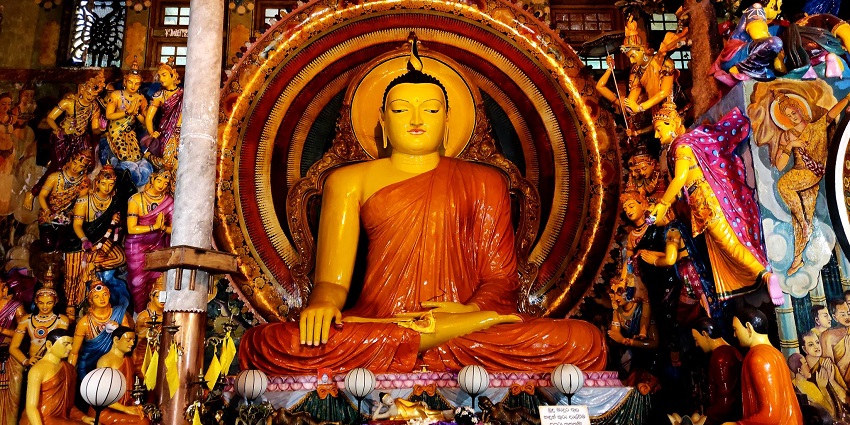
Photo: TheSriLankaLK / Wikimedia Commons
Gangaramaya Temple in Colombo is a unique fusion of modern architecture and traditional design, making it an eclectic and vibrant place of worship. Beyond its religious significance, the temple is a hub for cultural learning and social service. The temple complex includes a museum, library, and relic chamber. It is especially popular during the annual Navam Perahera festival. As one of the capital city’s most visited spiritual sites, Gangaramaya bridges the past and present in a distinctly Sri Lankan manner.
Location: 61 Sri Jinarathana Road, Colombo 02, Western Province, Sri Lanka
Timings: 6 AM – 10 PM
Nearest Airport: Bandaranaike International Airport (CMB) – 35 km
Sri Lanka’s storied past comes alive through its remarkable monuments. Each site, from ancient cities and sacred temples to colonial forts and commemorative halls, offers a chapter in the island’s fascinating narrative. These monuments in Sri Lanka reflect the religious diversity and cultural richness of the nation. Whether you’re a history enthusiast, a spiritual seeker, exploring these places promises a journey like no other. Plan your adventure with TripXL to discover the timeless beauty of Sri Lanka’s heritage.
Cover Photo: V. Epiney / Wikimedia Commons


 WhatsApp
WhatsApp
 Twitter
Twitter
